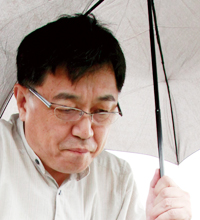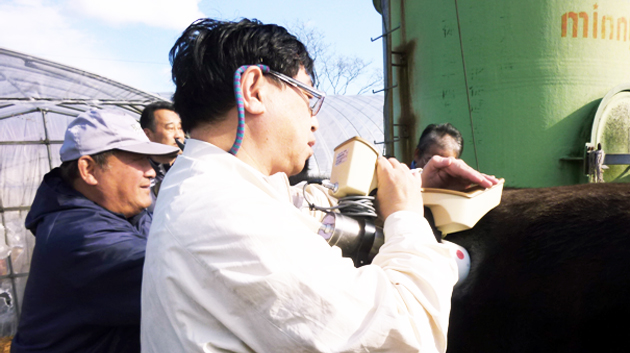Fukushima was not as serious as Chernobyl or Hiroshima
--Interview with Professor Jun Takada, February 7th 2012
It has been a year since the Great East Japan Earthquake and the Fukushima nuclear disaster occurred. All Japanese media gave daily reports on the areas worst hit by intense radiation, and fear of radiation is still rampant. Is radiation in the disaster area really dangerous enough to have negative effects on the human body? Radiation Protection specialist Professor Jun Takada of Sapporo Medical University gives a scientific account of the situation in Fukushima one year after the disaster.

Professor Dr. Jun Takada of Sapporo Medical University is a specialist in Radiation Protection. He earned his doctorate in Physics at Hiroshima University Graduate School of Science in 1990. He went on to conduct research at the James Franck Institute at the University of Chicago; the Research Institute for Radiation Biology and Medicine (RIRBM) at Hiroshima University; and the Kyoto University Research Reactor Institute (RURRI). He has been working at Sapporo Medical University since 2004. He has studied the effects of radiation in multiple locations in the world including Hiroshima, Chernobyl, the Marshall Islands, Kazakhstan, and Kroraina on the Silk Road. His findings have been published in several books including “Study of World Sites Exposed to Radiological Hazard” (Blue Backs Series, Kodansya Ltd.), and “Fukushima: Myth and Reality” (Iryokagakusha).
In April 2011, shortly after the disaster struck, I went to Fukushima and surrounding areas and conducted radiation level tests. This already made the situation quite clear, but produce grown in Fukushima Prefecture is still being sold, so in order to gain more information, I also researched the effects of such produce being consumed.
First, let me tell you about the areas outside the 20 kilometer radius around the Fukushima reactor including places like Iitate Village, from which people were forced to evacuate. I was able to confirm that neither external radiation that hit people from the outside nor internal radiation consumed in the form of food or drink was at a level that would be harmful to human health.
The biggest concern was internal radiation in the form of cesium. Between June 2011 and February 2012, I examined 87 people, and even those with the highest levels of radiation showed as little as 0.4 millisieverts per year. At this level, there is nothing to worry about. In addition, the amount of cesium has been going down ever since. There are two types of cesium called Cesium 134 and Cesium 137 with a respective half life of 2 years and 30 years. 10 months have passed since the nuclear disaster, and Cesium 134 has begun to deplete. According to my calculations, radiation will reach its highest level around February after which it will become weaker. Even if the real numbers digress slightly from my calculations, continuing my studies through this summer, I will be able to give definite information about these tendencies. This information indicating that radiation levels are low is based on data gathered in my own studies as well as data obtained by Japan Atomic Energy Agency.
The decay of external radiation is even faster. I have conducted studies in Fukushima since April 2011, and compared to 2011 levels, 2012 has seen a great fall in radiation levels. In 2011, I have examined people who evacuated the disaster zone and found that the highest level of radiation to affect people in Fukushima was still under 10 millisieverts per year, while most people from Fukushima Prefecture showed levels of 5 millisieverts or less.
In 2012, radiation levels have dropped further, and I can report major drops since last year in all areas tested. It is estimated that people in Fukushima Prefecture and the Aizu region are now affected by less than 1 millisievert of radiation per year. Generally, the annual amount of radiation affecting human beings worldwide is estimated at 2.4 millisieverts, and in 2012, it will drop to this level or lower in Japan’s disaster zone. There are other places in the world where radiation levels hit 10 millisieverts.
The reason we can stop worrying in 2012 is that the cooling of reactors in Fukushima was successful. All 3 reactors have been brought down to temperatures as low as 70 degrees Celsius. The radioactive materials released into the environment by the Fukushima reactors are being reduced dramatically. Small amounts are still evaporating, but according to government reports, they amount to less than 1 millisievert per year. By the time we reach the second year after the disaster, the radiation levels escaping from the plant will be so small their impact will be negligible.



















